something sinister is going on around here. people are being (literally) starved of a basic human liberty, and nobody seems to see it — nobody but me.
selfishly, part of me is relieved: I’ve been looking for a way to add value to a community of nerds but it’s hard because they’re all smarter than me. this one is easy—in fact, its simplicity is the only plausible reason it’s going unnoticed.
ok, @bungoman is in the neighbourhood (h/t)
^fibre is key for good poops, and good poops are key to a good life
today you’re going to learn what a vegetable is
disclaimer: I’m just some guy1, living a regular life, having picked up knowledge about veggies over the course of my life, which I will share here with limited factchecking out of the goodness of my heart. I’m not trying to make you a horticulturalist nor a nutritionist, I just want to give you some info so that you take a shit sometime this week and you don’t die of scurvy :)
vegetable:
not a vegetable:
vegetable:
not a vegetable:
vegetable:
barely a vegetable:
vegetable:
not a vegetable:
vegetables:
vegetables:
not actually a vegetable:
that’s it!
actually that was just the beginning
next, we’ll learn about types of vegetables, because there’s a damaging rumour out there about crucifores and I can’t stand it anymore
cruciferous vegetables refer to vegetables of the Brassica family. they tend to be higher in fibre, and also raffinose: the same trisaccharide that is responsible for bean farts. sometimes people with irritable bowel syndrome (IBS) avoid them for this reason.
Cruciferous vegetables include:
kale
broccoli
cabbage
cauliflower
brussels sprouts
mustard greens
bok choy
arugula
collard greens
most of these can be lightly steamed and buttered, or sautéed. if eaten raw (such as with kale, cabbage), I chop or shred them and leave to sit in a dressing that contains an acid (with the exception of arugula, which is fantastic raw). ps: don’t eat the kale stem
then you’ve got your lettuces. they get referred to as ‘greens’ interchangeably, probably because of their culinary applications, but not all greens are lettuces. a true lettuce is a member of the Asteraceae family.
Lettuces include:
romaine
iceberg
leaf (red/green)
frisee
butter lettuce
boston lettuce
these are pretty much always eaten raw, typically in a salad or as a garnish for a sandwich.
not a lettuce:
spinach
kale
root vegetables tend to be starchy and/or sweet. they also tend to take the most time to prepare, because they often require a deeper clean, sometimes peeling, usually chopping, and a longer cooking time. they are higher in carbs and typically pretty mild in flavour, so probably the most promising starting point for the vegetable-averse.
Root vegetables include:
beets
carrots
rutabaga
celeriac aka celery root
turnips
radishes
parsnip
potato and sweet potato**
**potato is not actually a root vegetable, but it cooks like one.
these store for quite a while, especially if kept in dark, dry, coolness. skins contain vitamins, so eat them if you don’t mind them. get a potato scrubber. when chopping, try to keep the size consistent. get a chef’s knife and keep it sharp. if boiling, be liberal when salting your water — this helps the minerals stay in the veggies. if roasting, use an oil or fat with a high smoke point and use an oven temperature that suits the size and density of the root you’re cooking. too high for too big a piece, and it will burn on the outside before cooking through the middle. experiment. they’re cheap.
… please don’t eat sprouted potatoes, ok?
sweet potato hack: stab a whole sweet potato, skin and all, with a fork a few times (don’t even wash it if you nasty like me), put it in the oven at 400*F for 45-60 minutes (depending on size) put a baking sheet under it cause it’s gonna get juicy !! take it out, let it sit for 5 minutes because it’s going to be deathly hot, cut it open, take off the skin, voilà you have made caramelized sweet potato ie., adult baby food.
alliums refer to the pungent vegetables that are technically root vegetables but have different culinary uses and properties. they tend to be antimicrobial and used in smaller quantities because of their potent flavour. ime they help with digestion but have an inverse effect if I eat too much of them.
Alliums include:
garlic
onion
scallion
leeks
chives
shallots
if you don’t know what you’re doing in the kitchen, adding a bit of chopped onion before you sautée your other vegetables is an easy way to make your food taste better.
hot tip: take out the green sprouty bit from the centre of your onion, especially if it’s growing out of your onion. it’s easier to peel garlic if you first lay the clove on a cutting board and use the flat part (side) of your knife to squash it with a blunt smack from the heel of your palm. inside your slightly crushed garlic clove you’ll see a teeny sprouty bit like in the onion; discarding it helps your body digest it more easily, and some people think it helps reduce the bad breath effect of eating garlic or onion.
members of the squash family are referred to as cucurbits. they tend to be watery and starchy and they’re the most unhinged crop, if you ever get the chance to plant one from seedling you should do it. little monsters fr.
Squash include:
butternut, acorn, pepper squash
zucchinis
cucumbers
pumpkins
melons
ofc some of these don’t require cooking, like melons and cucumbers. zucchinis can be eaten raw but I prefer them lightly roasted or grilled. squash and pumpkin are on the denser side and can be cooked a bit like a root vegetable; my preferred method is:
pop the whole squash in the microwave for 1 min to soften it (so you can cut it in half safely), scoop out the guts (you can save the seeds for roasting but it’s a bit of a pain to separate them from the slime), season with a bit of oil and salt, and pop in the oven around 350*F for 30-40 min. temperature and timing are highly subject to change depending on type and size; once you can pierce it with a fork, it’s probably cooked. fuck around and find out
solanaceae (so-la-nay-sha) is my favourite word to say and this family of vegetables is the most fuckable send tweet
Solanaceaes, aka Nightshades, include:
peppers
eggplants
tomatoes
ground cherries
tomatillos
*not really a vegetable but a fun fact: tobacco is a nightshade! (a tomato garden is a no smoking zone, I haven’t looked into it but if know the why do I’d love to hear you ‘splain it)
each of these are cooked pretty differently but I’ll speedrun you through them. peppers are best roasted or pan-fried imo. eggplants can be cubed before cooking or you can just slice one in half, brush it with oil and roast it like a squash (ish). tomatoes are great raw and all the other five thousand ways, too. ground cherries are a snack and need no prep. tomatillos are pretty niche and I’ve basically only encountered them in recipes for salsa verde, but they’re really good and you should try making it if you want
…now, things are about to get a little tricky. we’ve entered an area of controversy: the legume family. technically, peas and chickpeas are both legumes. I consider a pea a vegetable and a chickpea... not a vegetable. the main differentiating factor is that we eat peas and string beans fresh, while legumes like chickpeas and kidney beans are often dried or canned and conserved. “b-b-but we conserve [other vegetables] and they’re still vegetables??”.
I know this is confusing, ok? hear me out and then I’ll let you decide for yourself: peas and string beans are cooked and eaten like other fresh vegetables, usually raw or sautéed and served as a side. on the other hand, chickpeas and kidney beans are cooked and eaten like soy, which, while also technically a legume, is framed in nutritional terms as a protein source. these are often processed in ways that we don’t consider doing with fresh peas or beans, like made into tofu or black bean burgers or hummus.
PEANUTS are “““technically””” a legume
…do you see what i’m saying?
while not strictly accurate, you didn’t flinch when I said a tomato was a vegetable... because practically speaking, it is. so if you’ve come around to my classification, which you should have by now since it’s better, here are some
Legumes that qualify as vegetables according to Ev:
peas, such as snap or snow
beans
alfalfa sprouts
fresh snap peas are great raw, otherwise my preferred cooking method for peas and beans is pan-fried or added to a thai curry during the later stage of simmering. alfalfa sprouts can be eaten in a salad as-is; as with all microgreens2, be very sure they are washed and not expired.
now we have some sneaky ones that belong to families I already mentioned but I didn’t want to say them earlier because they’re a bit distracting:
spinach and swiss chard - part of the root family (related to beets somehow idk) effectively they are greens and should be prepared as such
parsley - also part of the root family, used as a fresh herb. chop and sprinkle
and some miscellaneous ones:
asparagus - o delicious and expensive one. pretty cool plant too, starts out a little fuzzy wisp and keeps growing back year after year. might make your pee smell funny. my fav cooking method is oven-roasted and buttered. snap off the bottoms first!
corn - our lordt and saviour, champion of versatility. imo it remains a vegetable so long as it’s on the cob or from a can, doesn’t count once milled/processed into polenta or flour. you can actually cook corn in the microwave pre-husking but you didn’t hear it from me
okra - underrated in the west tbh, tastes good, good for your poops, p easy to cook. find in asian supermarkets, prepare sort of like asparagus idk look up a recipe
mushroom - not going to get into it in this post, they’re their own fucking kingdom, I know nothing, pls don’t ask me. treat them with kindness, lest you face their wrath in the fungapocalypse. if you think they’re too slimey try them raw
rhubarb - wash it. cut one end. lick it. stick it in a bit of sugar. bite & delight. bask in the Divine Presence of True and Ultimate Beauty.
cheat codes
I’m not a good cook. I make most of my meals in an air fryer. I have more than once sung the praises of this device3 because it helps me eat more veggies:

for making vegetables taste good, the crutches I cling to are salt, fat, and occasionally, an acid.
if butter is your fat of choice, add it to the pan before the pan heats up. this is the opposite of what you do with oil, and it’s key to not browning or burning your butter.
salt is good. kosher salt is good; it’s less salty than other salts, so you can go pretty hard with it; it’s good for salting while you cook. sea salt is alright but overrated ngl. table salt is good; it contains iodine which is Probably Fine; it’s good for salting after you cook.
acids include lemon juice, vinegars, and tomatoes. these can make a big difference because they make flavours pop. for most vegetable dishes, you’ll add these in at the end (in small quantities). they are good in dressings, especially when you want to break up tougher greens like I mentioned earlier, with cabbage and kale.
if you really want to make something taste good, add sugar (yep, sugar). a bit of brown sugar on a roasted squash is chef’s kiss. white sugar is the not-so-secret ingredient in many pasta sauces; it helps balance the acidity of the tomatoes. a teaspoon of sugar in a whole batch of sauce is not going to kill you, but it might make you a little less hopeless at eating veggies!
~a final earnest note~
I’m sorry if you grew up in a way that made vegetables an enemy. I think it’s utter shit that a lot of people think vegetables have to be gross. I’m a little sorry for making fun of you, but I’m still going to post this as-is, because that’s how it came out and this message is urgent. I do it with love <3
I am in fact a lady
if you don’t know what a microgreen is just ignore this
not an affiliate fml






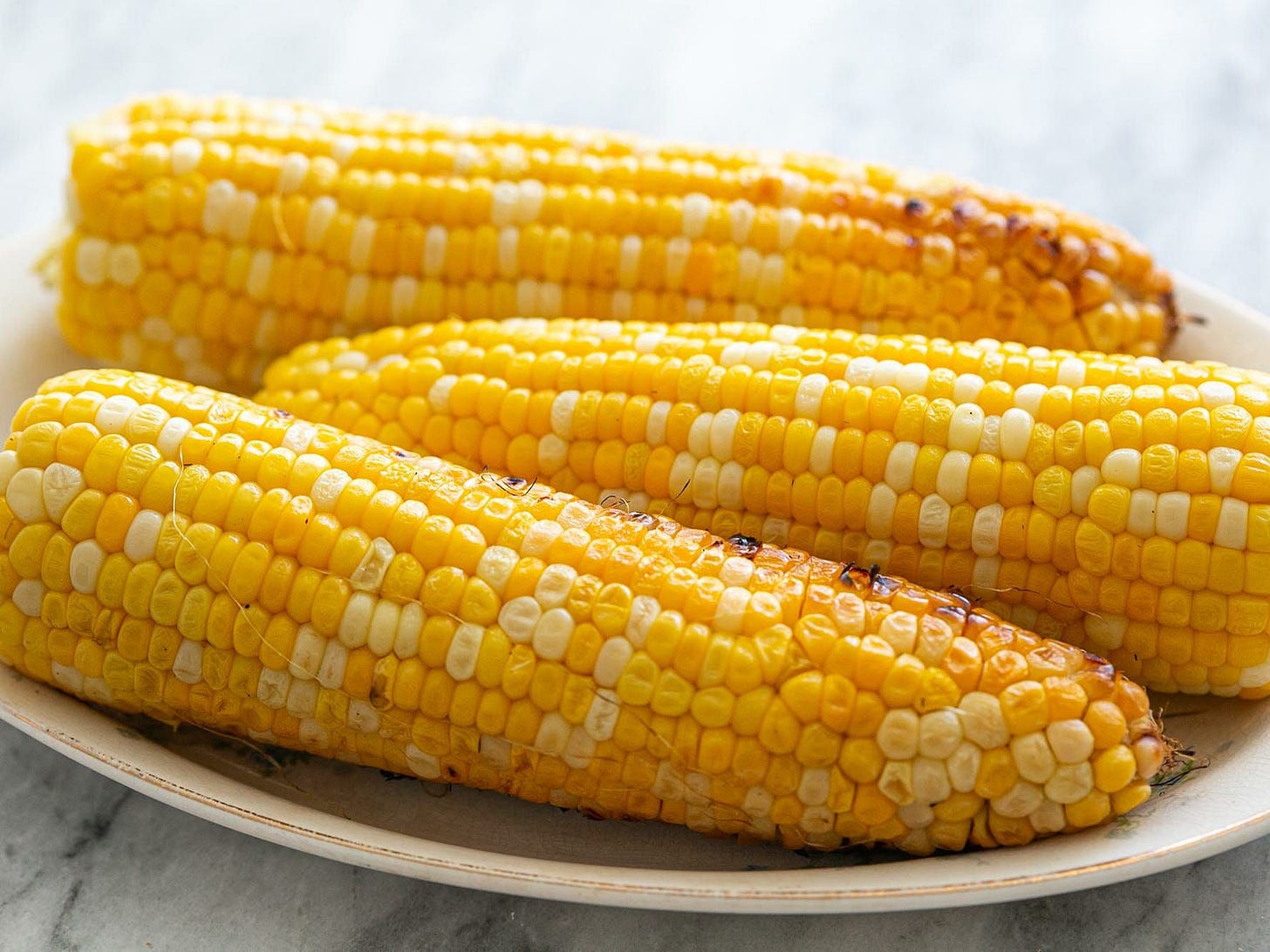

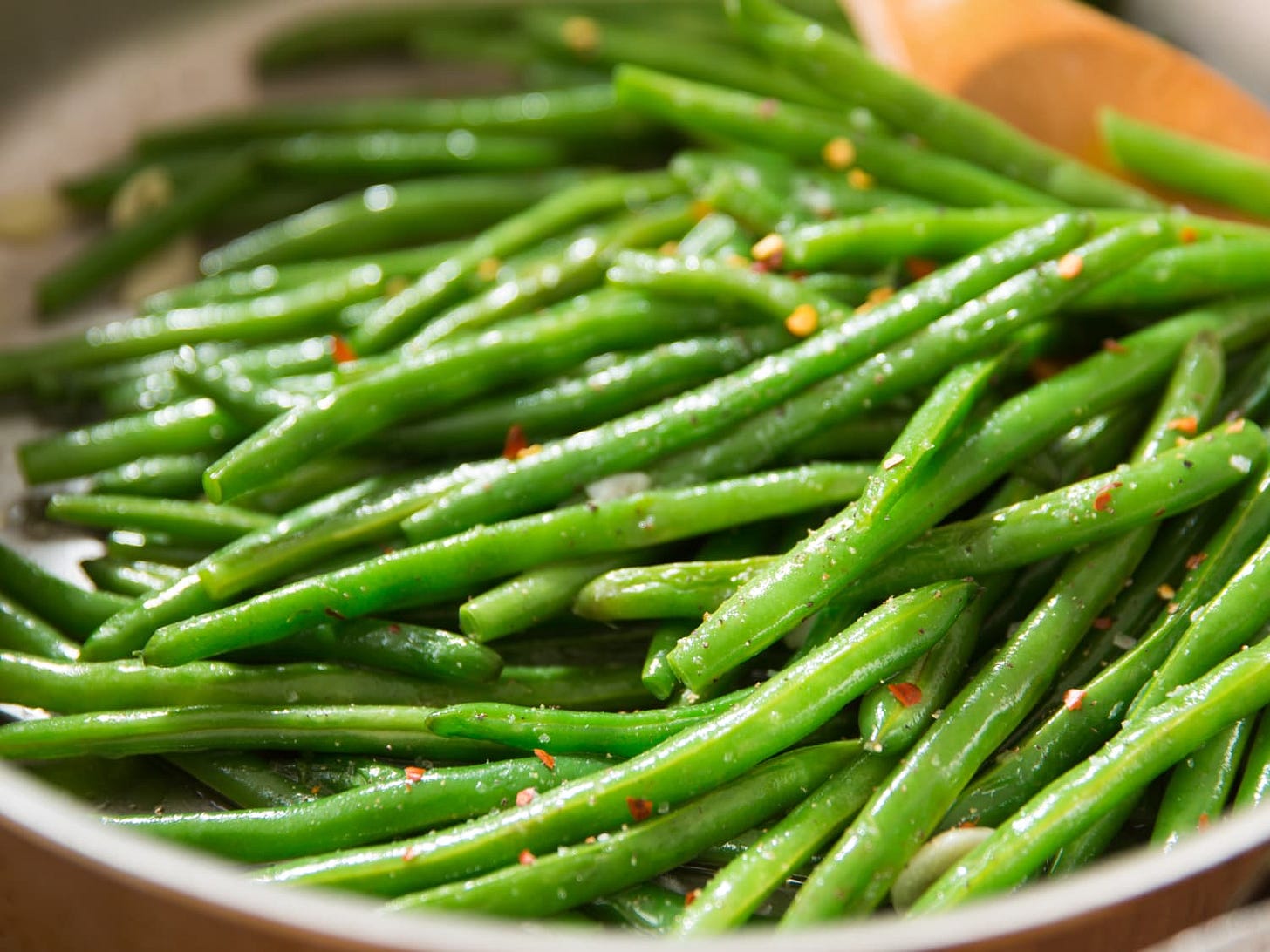



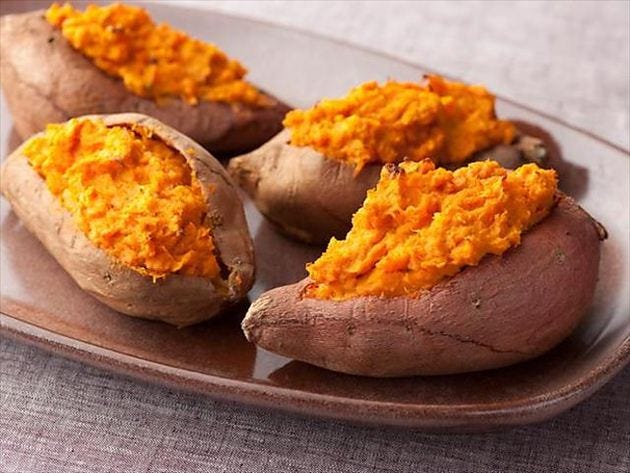


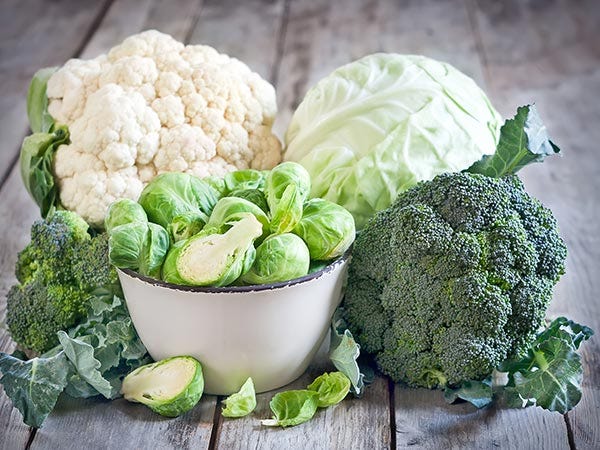
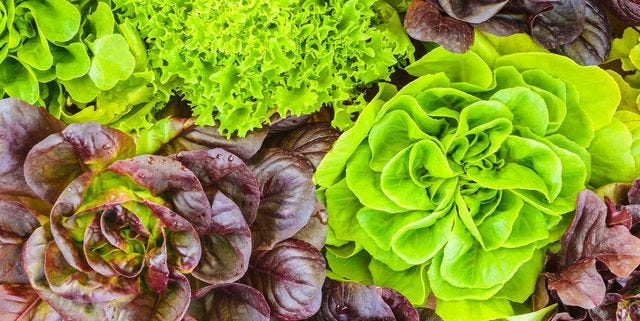
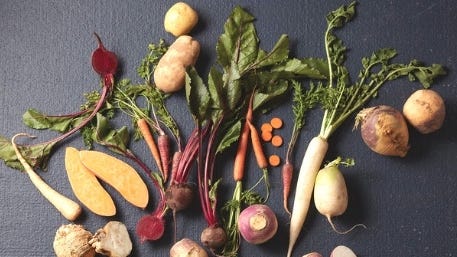



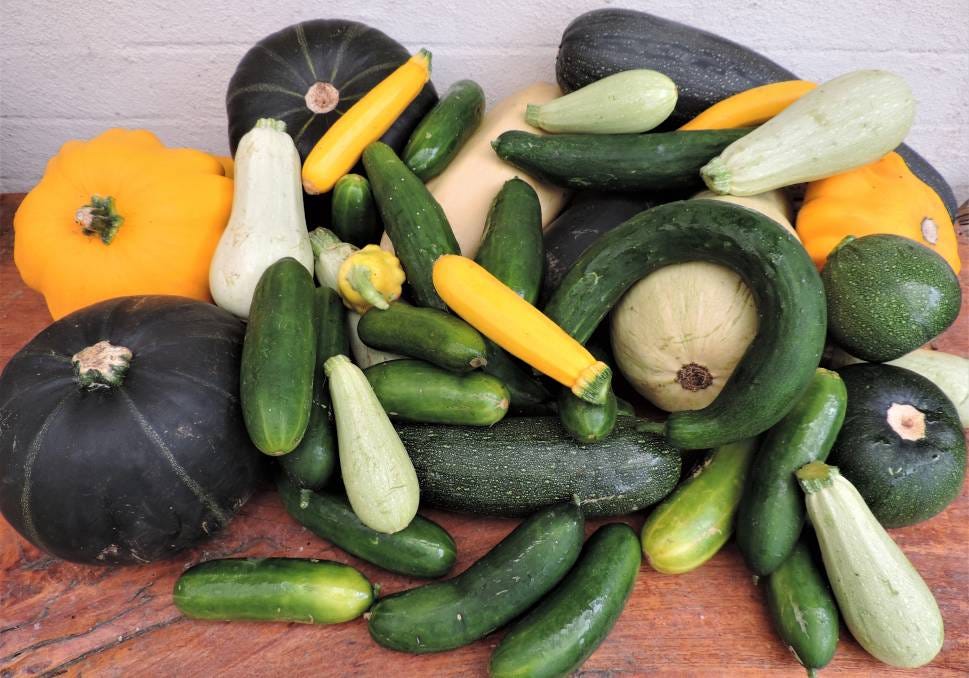



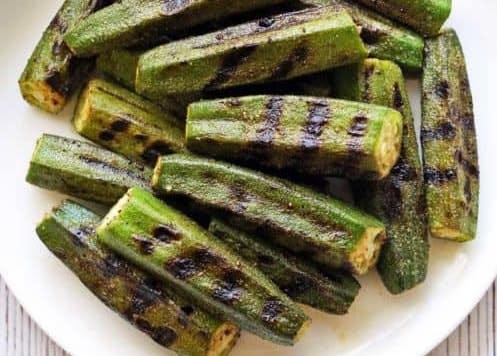

This read was 10x more useful than the food pyramid will ever be. You may have also convinced me to finally get an air fryer as well.